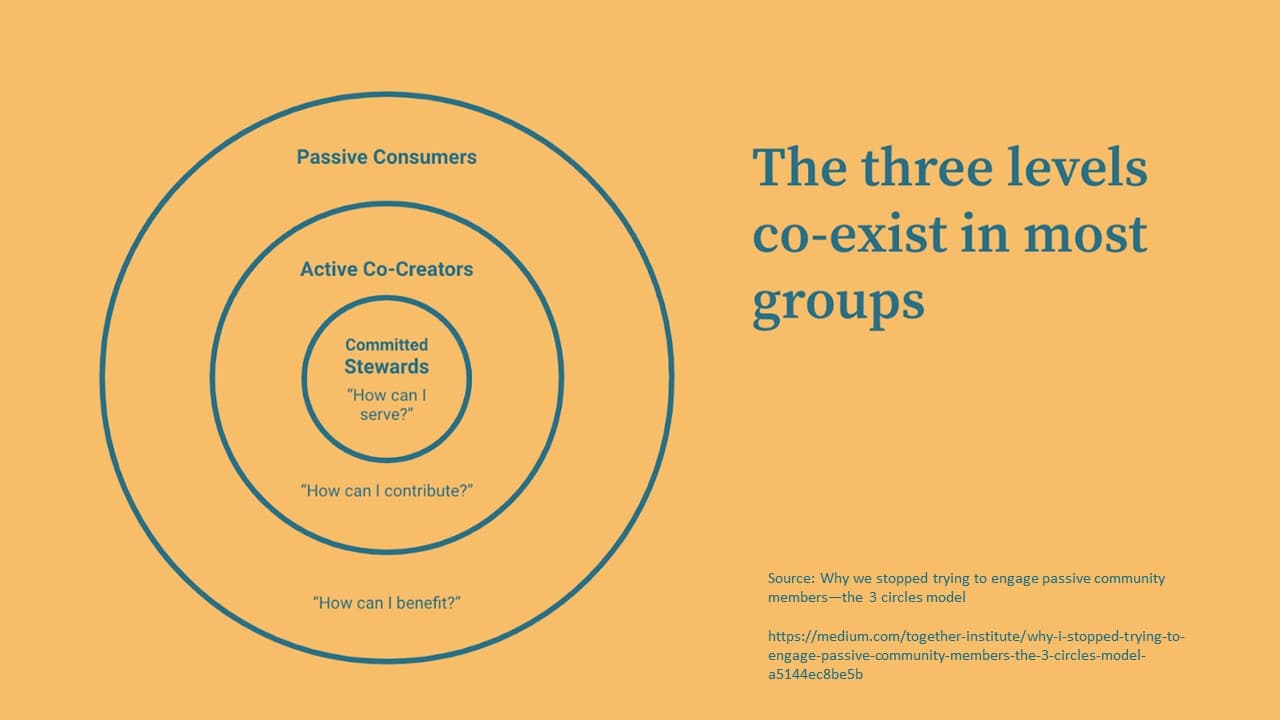Cultivating Community is an Endurance Sport
An “inside-out” growth strategy is conducive to the cultivation of relationships and trust essential to a collaborative community. However, membership growth is likely to be frustratingly slow for several years before accelerating due to the dynamics of referral. The good news is that an inside-out strategy doesn’t require intensive investment on the part of the host. However, it does require patience and persistence. It’s a marathon rather than a sprint.
Networks and Communities
(Video timestamp: 0:15)
Networks connect; communities care. The differences between the two are important. Networks catalyze weak tie connections, and communities help develop strong ties. The former allows us to tap into cognitive diversity and new and better ideas. The latter supports the collaboration that translates those ideas into actions and results. Communities are defined by meaningful connections that take time to develop.
The growth strategies we pursue have a profound effect on whether we end up with a community or a network. Know where you want to go before you set out on your journey.
Archetypal Growth Strategies
(2:03)
Fabian Pfortmüller distinguishes between two archetypal growth strategies: growing from the outside-in and from the inside-out.
Outside-in Strategy
This is the default “marketing funnel” approach. Through it, one seeks to reach as wide an audience as possible and then push prospective members through a process that somehow yields engaged community members. The outside-in strategy emphasizes member acquisition through advertising.
By advertising, I mean one-to-many marketing messages initiated by the host. Content marketing is one widely touted form of advertising as defined. The frequency, reach, and persuasiveness of advertising is largely under the control of the host. That’s probably why we reach for that lever so often.
Inside-out Strategy
The inside-out strategy, on the other hand, builds on the relationships that emerge from a small group of initial members. The strategy emphasizes word-of-mouth referral by members.
True word-of-mouth is a function of the investment of social capital on the part of members, which is outside of our control as hosts. We can influence the rate of referral—primarily by ensuring that members’ experiences and relationships are worthy of referral. However, we can’t directly control word-of-mouth.
Characteristic Patterns of Growth
(3:10 – 9:43)
With the help of a computer simulation, I demonstrate how and why the two growth strategies yield different characteristic patterns of growth.

By “active members” I’m referring to those members who inhabit the innermost circles of Michel Bachman’s 3 Circles model:

Given sufficient effort and resources, an advertising-focused, outside-in strategy can yield gratifying growth in its early stages. However, the resulting relationships and trust tend to be shallow. That means that referral and retention are likely to be relatively low. Consequently, the growth rate from an outside-in strategy decelerates with time. The only way to sustain growth in the long-run is to invest increasing amounts in promotion and advertising.
On the other hand, the initial growth in membership from an inside-out strategy can be agonizingly slow. It may take several years to cultivate a community approaching 100 members. However, if meaningful relationships and trust develop, relatively high rates of referral and retention can accelerate growth over time.
Conclusions
(9:43)
An outside-in strategy is well-suited to building a network, where the requisite level of trust among members is relatively low. However, an outside-in strategy may require intensive effort and the investment of significant resources.
Alternatively, an inside-out strategy is appropriate for a collaborative community, where the requisite level of trust among members is relatively high. In fact, it may be essential for cultivating a truly collaborative community. Creating an environment in which relationships and trust can develop requires patience, persistence, and humility.
The good news is that a successful inside-out strategy need not require a high level of investment on the part of the host. It’s a sustained rather than intensive effort. It’s a marathon rather than a sprint.
Additional Reading
Weaving communities from the inside-out or from the outside-in?
